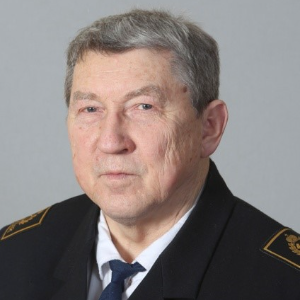Title : Dr. Evdokimov studied and graduated from the Geological Department of St. Petersburg State University, specialized in mineralogy. He worked at the Arctic Geology Research Institute, traveled to field work in Polar Yakutia, the Novaya Zemlya archipelago, the Chukotka Peninsula, Franz Joseph Land, and the Svalbard archipelago. Nowdays he is professor
Abstract:
The process of formation of hydrocarbons is associated with the warming of the subsoil. In this case, intensive conversion of scattered organic matter (RM) into oil and gas takes place. This process is activated at the depths of immersion of the initial oil horizon to a depth of 2-3 km. Here temperatures reach 60-200 ° C. However, such temperatures could be reached at lower depths, due to the influence of intrusions of magmatic melts. In particular, the melt of the main composition creates a temperature field around the intrusive body up to 1000 ° C. The thickness of precipitation subjected to thermal action of magmatic melts could be quite high, since the temperature in them decreases tangentially depending on their thermal conductivity and distance from hot intrusion. If traps are widely developed in the region, then obviously, due to increased glandularity, these magmatic bodies of the main composition have increased magnetization and according to this feature, they are distinguished on maps of an abnormal magnetic field. The Barents-Kara Shelf is one of the largest oil and gas provinces in the world. The oil and gas potential of the region is proved by the results of geological exploration, drilling of 33 deep wells, identification of a series of oil and gas bearing structures, the presence of fields: Prirazlomnoye oil, Shtokmanovsky, Rusanovsky and Leningradsky gas condensate fields, penetrated by Rosneft well Universitetskaya oil fields on the Kara Sea shelf – “Pobeda”. Due to the high costs of conducting exploratory seismostratigraphic profiling and subsequent drilling to verify the detected anomalies, it seems relevant and expedient to perform preliminary zoning of the shelf area based on the data of the already performed remote mapping of anomalous magnetic and gravitational fields of the Barents and Kara Seas.
In order to perform preliminary forecast zoning of the Barents-Kara shelf area, we had a series of different-scale maps of gravitational and magnetic anomalies compiled as a result of geological survey geophysical work within the framework of the projects: Gosgeolkart 1000 and Gosgeolkart 200 of different generations. They were reduced by us to 1: 5,000,000 scale maps.
In the region, especially in its island part: the Novaya Zemlya archipelago, the Svalbard archipelago and Franz Joseph Land, the magmatism of the main composition of the Paleozoic and Mesozoic stages of tectonic-magmatic activations is manifested. Late Devonian basalts are mapped in the Timan-Pechora region and on the Novaya Zemlya archipelago. In the form of covers and intrusions of diabases, they act as tires of Devonian oil and gas deposits.
Perm-Triassic traps are manifested on the Taimyr Peninsula, Dixon, in the Polar Urals, on the Severnaya Zemlya archipelago.
In the gravitational field, linear anomalies of destructive influence on hydrocarbon deposits are distinguished, which spatially coincide with the Kola-Kaninsky zone of deep faults, the "North Siberian threshold," the boundaries of the raised basement block in the Franz Joseph Land area and other structures.
On the map of magnetic anomalies, especially in the eastern part of the region, intense alternating anomalies form extended zones and chains of local maxima with the predominance of a positive sign. Weak negative anomalies occupy positions between strong positive ones. In the area of ? ? the outcrops of basalt covers and sills on island land within Franz Joseph Land, the magnetic field is represented by differentiated positive anomalies. In accordance with our proposed interpolation methodology, these are zones of destructive effects of magmatism on hydrocarbon deposits.
Jurassic-Cretaceous intrusive and cover formations are common on Franz Joseph Land, on Svalbard, and in the eastern waters of the Barents Sea. Thus, magmatism can contribute to the generation and migration of hydrocarbons inside the sedimentary formation into reservoir and structural reservoirs, and contribute to their accumulation. On the other hand, magmatism is able to dilute hydrocarbon deposits until their complete disappearance.
Audience Take Away:
The presentation will help in the interpretation of magnetic exploration and gravimetric exploration data to predict the oil and gas potential of a region
The report will help improve the profitability of geological prospecting operations on the continental shelf of the Arctic region
The methodological approach to the interpretation of geophysical fields will allow a new assessment of the prospects of the Barents and Kara shelf for hydrocarbons


